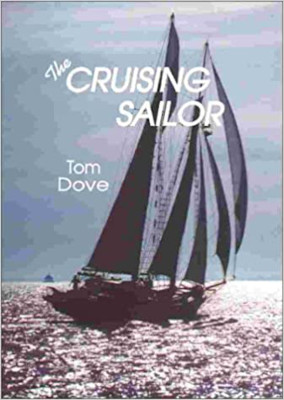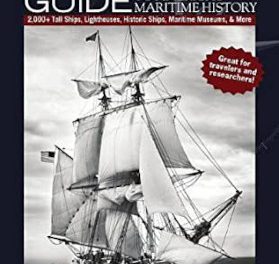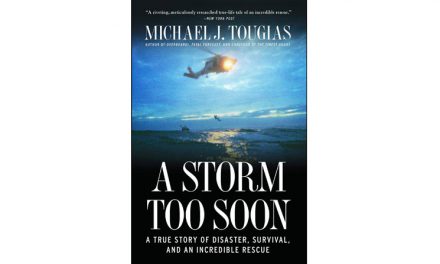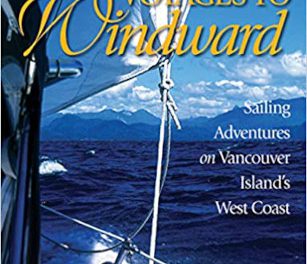
It may be an oxymoron, but Tom Dove’s book, The Cruising Sailor, is a great little book. Its 133 pages are only 8.5 by 5.5 inches but full of helpful ideas and information. The author’s aim is “to introduce newcomers to cruising under sail, although experienced sailors will find useful information and a bit of entertainment.” And that is exactly what he has done.
I have long admired Tom’s storytelling and writing ability. In this book he intersperses three fiction-based-on-fact stories among all the details and explanations to keep the whole thing interesting. I had a good laugh with one of his stories of inept skippers trying to anchor in a sheltered cove prior to an afternoon Chesapeake Bay thunderstorm. One can pick up tips and ideas — from correct anchoring procedures, to standing watch, to meal preparation in advance – just from the stories.
Tom also writes of basic things like hull and cabin sizes and types, weight, power, speed, rigging, construction techniques, surveys . . . all very helpful if you are determining what type of sailboat to purchase for cruising, or if you’d like to know more about that boat which commands a significant portion of your life and income. He gives excellent boat handling advice, for example, on chain-rope-chain-rope anchor rodes and how to use a spring line to dock alongside a pier or to enter a marina slip stern-to, first time, every time, and make everyone watching think you’re a pro.
I appreciated the three Appendices. Appendix One lists useful boat design formulas, including how to figure maximum hull speed for a displacement hull. (We often discuss this at the dock, but no one ever seems to remember how to calculate it.) Appendix Two lists a couple dozen excellent sources for equipment, books and magazines (yes, our favorite, Good Old Boat is listed). Appendix Three offers excellent checklists of tools and supplies for small cruising boats without electrical or plumbing systems and for medium and larger cruising and liveaboard boat s.
There is an index and a fairly complete glossary written in “straight-forward English” so anyone can understand. However, I was a little confused with this definition: “Mile: A statute mile (land mile) is 5280 feet. A nautical mile (water mile) or knot is 6080.2 feet.” Of course, we all know that a “knot” is not a nautical mile (distance), but a nautical mile per hour (speed).
So that this book can go cruising and last, Bristol Fashion Publications publishes it on acid-free, mildew-resistant, archival-quality paper placed between heavily laminated covers to prevent water penetration and mildew. The binding allows the book to lay flat on any surface.
Tom makes the point that cruising can be enjoyed in any number of ways and that cruising does not have to be reduced to camping on the water. Cruising, he says, is “the achievable dream,” and he has gone a long way toward helping us reach that goal. It’s a great little book indeed.
The Cruising Sailor by Tom Dove (Bristol Fashion Publications, 1999)




